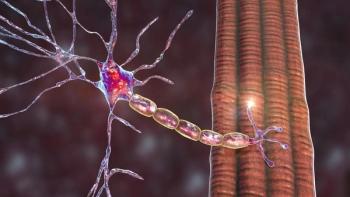
BiTEs, CAR T-Cell Therapy Enhance ALL Armamentarium, But Questions Remain
Lloyd Damon, MD, discusses the evolution of the treatment paradigm in acute lymphoblastic leukemia.
Lloyd Damon, MD
Novel treatments, including CAR T-cell therapy and bispecific T-cell engagers (BiTEs), have helped revolutionize the treatment of patients with acute lymphoblastic leukemia (ALL), but researchers continue to refine use of these modalities, according to Lloyd Damon, MD.
“A lot of new CAR T-cell data came out with regard to ALL—[data showing] good expansion of CAR T cells in patients with ALL…and having consistency of the CAR T cells because patients seem to do much better on persistent CAR T cells over time,” said Damon, clinical professor of medicine in the Department of Medicine, director of Hematologic Malignancies and Bone Marrow Transplant, and the Robert O. and Angela W. Johnson Endowed Chair in Hematopoietic Malignancies, UCSF Helen Diller Family Comprehensive Cancer Center. “The theme of CAR T cells is trying to go forward and make them more effective, safer, and more persistent over time.”
Additional questions remain with the importance of allogeneic stem cell transplant, the evolving role of chemotherapy, and also how to best utilize the CD19/CD3-directed BiTE blinatumomab (Blincyto) in this space, Damon explained.
In an interview during the 2019 OncLive® State of the Science Summit™ on Hematologic Malignancies, Damon discussed the evolution of the treatment paradigm in ALL.
OncLive: How would you define the current management of patients with ALL?
Damon: The BLAST trial used blinatumomab, an anti-CD19/anti-CD3 BiTE, to treat minimal residual disease (MRD)—positive individuals with the intent to go on to transplant. The trial was successful; 78% of patients became MRD negative and the vast majority of them made it to allogeneic transplant. It looked like their outcomes were better, especially compared with those who did not achieve MRD negativity with blinatumomab.
This led to the
At the 2019 ASH Annual Meeting, a lot of new CAR T-cell data came out with regard to ALL, but new constructs are needed to see if there are ways to reduce toxicity. [We may need to] seek different antigens on ALL cells to look for improvements, or they may have different costimulatory domains—traditionally it has been 4-1BB and CD28, but something else could possibly offer advantages.
The last question that [comes to mind] is, “If you do succeed in getting patients into remission with CAR T cells, should you add allogeneic transplant?” There are conflicting data on whether that is important or not, so that is something that must be resolved. Pediatric patients with ALL who go through an allogeneic transplant are rare. In adults, it is more common; adult patients are more willing to go in that direction. That is something that needs to be addressed with future research as well.
Where do you see this field moving? How will it look, overall, as we enter a new decade?
We have to keep in mind that in most hematologic malignancies, chemotherapy does not solve all problems. Immunotherapy is important and where we place it [to ensure] successful regimens are incorporating immunotherapy modules—such as blinatumomab, other BiTEs, or inotuzumab ozogamicin—within the backbone of chemotherapy. I do not think ALL will ever be completely effective at treating patients without chemotherapy. However, the addition, timing, and scheduling of [these immune-based regimens] is definitely the next wave [of treatment].
CAR T-cell therapy does not appear to be our answer, as we have a high response rate but a high relapse rate [with that approach]. Then, there is the role of allogeneic transplant after CAR T-cell therapy. This is really important in ALL, compared with other conditions, such as lymphoma or myeloma.
Is there anything else about the current state of ALL treatment that is important to highlight?
It is critical that you appropriately identify individuals in remission with ALL and that allogeneic transplant be thought of early on in the treatment course. In ALL, we do not get much in the way of a second chance [with our patients’ treatment]. It is important to apply your best therapies upfront; in the relapse setting, things are substantially worse compared with other hematologic malignancies.
The thing that I have not spoken about is a new entity in Philadelphia (Ph) chromosome—like mixed-phenotype ALL. We are now better understanding the biology of that, but these patients do relatively poorly compared with those without the Ph-like signature. What are we going to do about it? The pediatricians are ahead of us working on that, but targeted agents, such as ruxolitinib (Jakafi) or dasatinib (Sprycel), may help overall.
Newsletter
Stay at the forefront of cutting-edge science with CGT—your direct line to expert insights, breakthrough data, and real-time coverage of the latest advancements in cell and gene therapy.











































